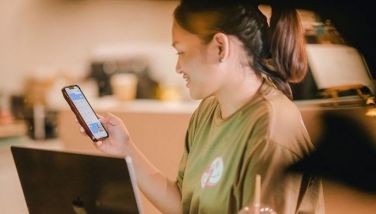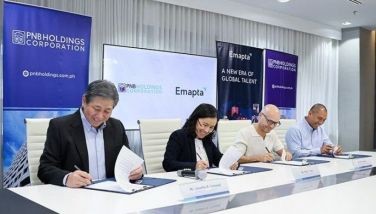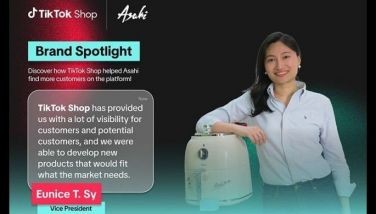That second cup
May 26, 2003 | 12:00am
As an advertising strategy, Café Nescafe not only pays for itself. It also contributes to the bottom line of Nestlé Phils. Inc.
"We wanted to increase awareness of Nescafe in a non-traditional way. We also wanted to expand brand usage by showcasing Nescafé in different formats," said Nestlé senior vice-president for food services Manuel Parroco.
Because it doesn’t have the core competency, Nestlé has partnered with La Barista, Inc. in putting up Café Nescafe. La Barista provides the system, the coffee shop ambiance, and the training. Nestlé supplies the instant coffee and the coffee machines that transform the breakfast coffee served at home into more exotic concoctions.
The result is a coffee shop chain with a menu of 15 beverages and 15 pastries. On the side, the chain retails Nescafe produced in different countries and which are not readily available in the country. An example is Nescafe President, which is sold in Japan and is geared towards the cold coffee preparations favored by the Japanese. In the Philippines, 60% of coffee drank outside the home is served cold.
To date, Café Nescafe has seven outlets, three of which are operated by franchisees. Investment per store is P3 million, inclusive of the P750,000 franchise fee for a three-year contract. Payback is targeted at six months, depending on how much is paid out in renting a minimum space of 40 square meters in a high pedestrian traffic area like a transport terminal or a mall.
Started close to three years ago in Europe, Café Nescafe is one of Nestlé’s global initiatives to encourage coffee drinkers to take that second or third cup.
"The out-of-home segment in the country is rapidly expanding by 20% a year. There is also incremental value from restaurants and fast food chains since 15% of meals are now taken outside the home," said Parroco.
An added factor to Café Nescafe’s local launch is the taste. Blind tests conducted by Nestlé show instant coffee holding its own against ground beans.
"In terms of flavor, it’s an even playing field. In terms of aroma, beans are stronger. In terms of consistency, instant coffee is ahead," he said.
Most American coffee chains use a pressure rather than a drip system in making coffee, which highlights the role of the barista or on-site maker of coffee and the quality and freshness of beans used.
"Our barista training program is at par with the industry. What sets us apart is our coffee, which has the same taste profile cup after cup. We’re staking our name on it," said Parroco.
That name staking does not only include the Nescafe brand but its Café Nescafe partners and employees as well.
"We wanted to increase awareness of Nescafe in a non-traditional way. We also wanted to expand brand usage by showcasing Nescafé in different formats," said Nestlé senior vice-president for food services Manuel Parroco.
Because it doesn’t have the core competency, Nestlé has partnered with La Barista, Inc. in putting up Café Nescafe. La Barista provides the system, the coffee shop ambiance, and the training. Nestlé supplies the instant coffee and the coffee machines that transform the breakfast coffee served at home into more exotic concoctions.
The result is a coffee shop chain with a menu of 15 beverages and 15 pastries. On the side, the chain retails Nescafe produced in different countries and which are not readily available in the country. An example is Nescafe President, which is sold in Japan and is geared towards the cold coffee preparations favored by the Japanese. In the Philippines, 60% of coffee drank outside the home is served cold.
To date, Café Nescafe has seven outlets, three of which are operated by franchisees. Investment per store is P3 million, inclusive of the P750,000 franchise fee for a three-year contract. Payback is targeted at six months, depending on how much is paid out in renting a minimum space of 40 square meters in a high pedestrian traffic area like a transport terminal or a mall.
"The out-of-home segment in the country is rapidly expanding by 20% a year. There is also incremental value from restaurants and fast food chains since 15% of meals are now taken outside the home," said Parroco.
An added factor to Café Nescafe’s local launch is the taste. Blind tests conducted by Nestlé show instant coffee holding its own against ground beans.
"In terms of flavor, it’s an even playing field. In terms of aroma, beans are stronger. In terms of consistency, instant coffee is ahead," he said.
Most American coffee chains use a pressure rather than a drip system in making coffee, which highlights the role of the barista or on-site maker of coffee and the quality and freshness of beans used.
"Our barista training program is at par with the industry. What sets us apart is our coffee, which has the same taste profile cup after cup. We’re staking our name on it," said Parroco.
That name staking does not only include the Nescafe brand but its Café Nescafe partners and employees as well.
BrandSpace Articles
<
>
- Latest
Latest
Latest
March 7, 2025 - 11:00am
March 7, 2025 - 11:00am
March 5, 2025 - 11:00am
March 5, 2025 - 11:00am
February 28, 2025 - 9:16am
February 28, 2025 - 9:16am
February 27, 2025 - 5:00pm
February 27, 2025 - 5:00pm
February 21, 2025 - 9:00am
February 21, 2025 - 9:00am
Recommended

























